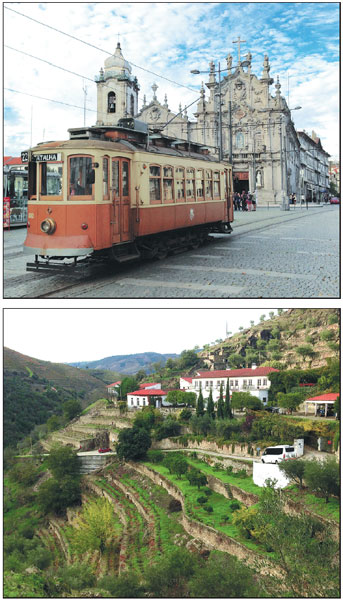Porto calls
Updated: 2016-03-16 08:13
By Erik Nilsson(China Daily)
|
||||||||
Portugal's wine city and the river valley from which its port pours sculpt the profile of a region shaped by grapes in every sense. Erik Nilsson explores its shores.
Wine wrought the Douro Valley.
Its inhabitants have spent the past two millennia carving livings out of the shale mountains that nosedive into the river, whittling the peaks into terraces clutched by grapevines.
Nearly 50,000 of the region's 250,000 hectares have been lathed into hundreds of liana-wrapped honey-dipper tips.
The world's oldest demarcated wine region remains rugged.
Some residents of neighboring Porto city say of this hinterland: "The women are men. And the men are werewolves."
(The valley folk may take exception.)
This is the home - the sole source - of port wine.
The fermentation of the wine made from grapes here is incapacitated by brandy that's at least 77 percent alcohol to halt fermentation and preserve the sugars that give port its hyperactively saccharine character, relegating it exclusively to the realms of aperitif or digestive.
This beverage is both born of, and has sired, the culture this land has forged - a culture that has, in turn, reshaped the land's contours.
The fruits of local labor bejewel the leaves that sheathe the bouncing topography, festooning verdure plumage with clusters of sapphire, emerald and ruby.
The UNESCO World Heritage site is a place where such wineries as Quinta da Pacheca still squish grapes with human feet.
Visitors prance atop the fruit to traditional music around the September harvest.
That's not merely a gimmick.
Squashing the fruit between toes is the only known way to extract juice without crushing the seeds, which sours grapes' guts with acidity.
Mass producers are investing to develop robotic silicone feet to prevent seed ruptures - so far, in vain.
(They've at least dipped their toes in the business.)
One person can clomp a ton of grapes - literally - in about three hours.
The two-century-old winery also hosts a hotel in a noble's house. Diners can swill port - and other wines - while enjoying paired foods in a restaurant whose floor-to-ceiling windows afford striking views of the terraces.
Most visitors make the picturesque journey by car, boat or train to the land where the grapes are grown from the city from where wine is shipped around the world - Porto, from which both port and Portugal take their appellations.
Wine has remained integral to the ancient settlement that's best explored aboard the vessels that ply the Douro River.
Old buildings spill down the banks of the waterway up to where it ejects into the Atlantic.
Bridges frame the abodes of the small settlement first built on a rocky hill in 700 BC that the Romans later expanded.
Seagulls vault over the ripples like skipping stones, occasionally flicking their beaks into the water to snatch fish.
The watercourse is lined with cafes and bars among the stupendously slender houses that line the banks.
The buildings families have inhabited for generations were designed to be exceptionally narrow to manipulate property-tax codes.
This stretches riverside vistas with a vertical pull that intersects abruptly with the broad waterway's horizontal tug.
Most structures are sheathed with neo-Moorish tiles, creating an ornate aesthetic in which color and geometry compete to create peacocks of buildings.
Miles of tiles encase the edifices that hug streets that spin up the hills.
Thoroughfares were originally designed around guilds - nobles were forbidden from the area.
The city chosen as Europe's cultural capital in 2001 has long remained a bastion of authors and poets.
It's particularly renowned for its bountiful bookstores, including Lello & Irmao, which was frequented by J.K. Rowling when she taught English in the city. It's believed its staircase inspired Hogwarts'. Her characters' capes also resemble Portuguese students'.
Lonely Planet ranked the neo-Gothic establishment as the "third most beautiful library in the world".
But while the cityscape conjures a magical allure, a major ingredient in the love spell it casts is concealed underground.
Porto hides a hive of wine cellars that offer tours and tastings.
Sandman ranks among the biggest port brands, and its subterranean tunnels draw visitors to stroll among stacks of casks before aboveground samplings.
The traditional cellar is nearly next door to, but conceptually a million miles from, the Porto Cruz Multimedia Center.
The contemporary center is a techie-arty celebration of the brand's port that employs touchscreens, film and art displays to celebrate its wines.
It also produces jams, creams and teas that use port as ingredients.
Indeed, port wine has so shaped the area's physical composition and saturated its culture that it's not solely imbibed - but even eaten.
It flavors every dimension of local life.
Contact the writer at erik_nilsson@chinadaily.com.cn
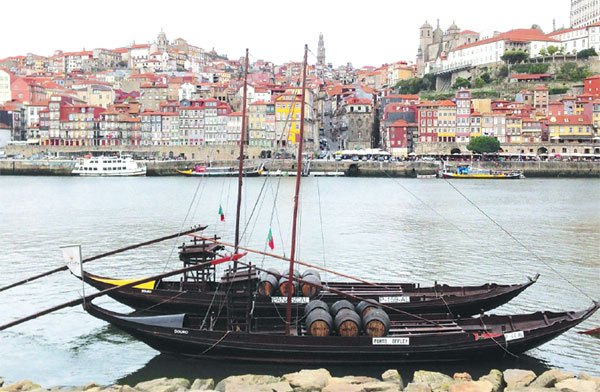
|
Top: The best way to explore Porto's shores is by boat.Middle: A vintage tramruns in front of the 17thcentury Carmo and 18thcentury Carmelitas churches, which are separated by one of the world's narrowest houses. Above: The Douro Valley'smountains have been whittled overmillennia to support vineyards that produce port wine. Photos By Erik Nilsson / China Daily |
(China Daily USA 03/16/2016 page10)
- Flawless blue diamond up for auction at Sotheby's
- Apple submits final argument before court hearing on terrorist's phone
- Cuba, US to restore direct mail links
- Kerry to travel to Russia, meet Putin on Syria next week
- Putin says Russians to start withdrawing from Syria, as peace talks resume
- Merkel says Sunday's state elections 'make her party think'

 Infographics: All you need to know about Premier's press conference
Infographics: All you need to know about Premier's press conference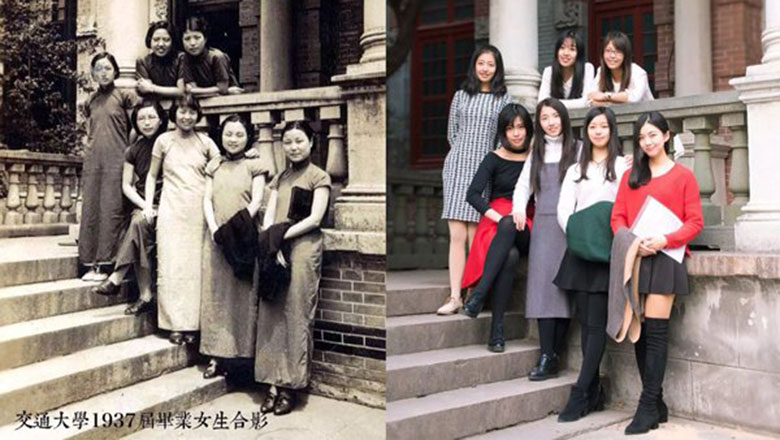
 Now and then photos of Shanghai Jiaotong University
Now and then photos of Shanghai Jiaotong University
 Post-90s quits his job to make traditional paper umbrellas
Post-90s quits his job to make traditional paper umbrellas
 In pictures: Destroying fake and shoddy products
In pictures: Destroying fake and shoddy products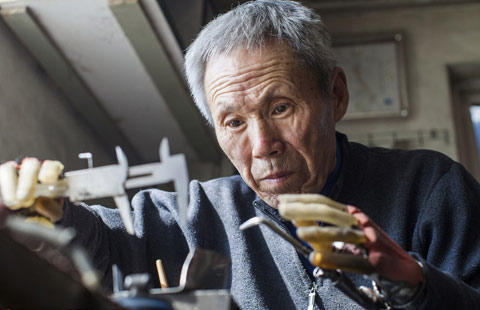
 Armless farmer builds new hands for himself, others
Armless farmer builds new hands for himself, others
 The world in photos: March 7 - March 13
The world in photos: March 7 - March 13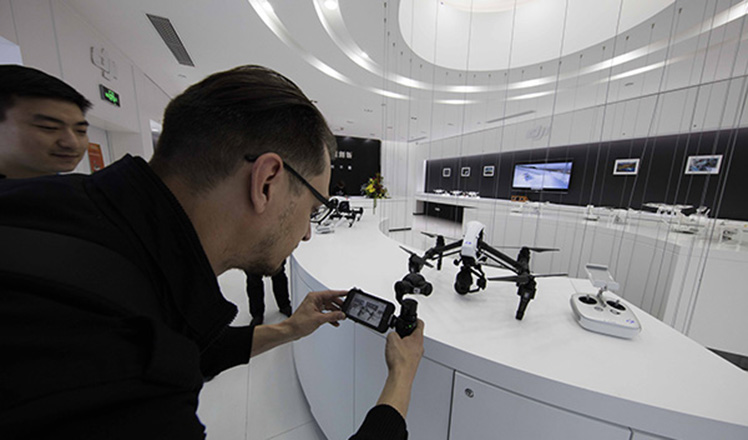
 China's booming IT industry helps drones fly high
China's booming IT industry helps drones fly high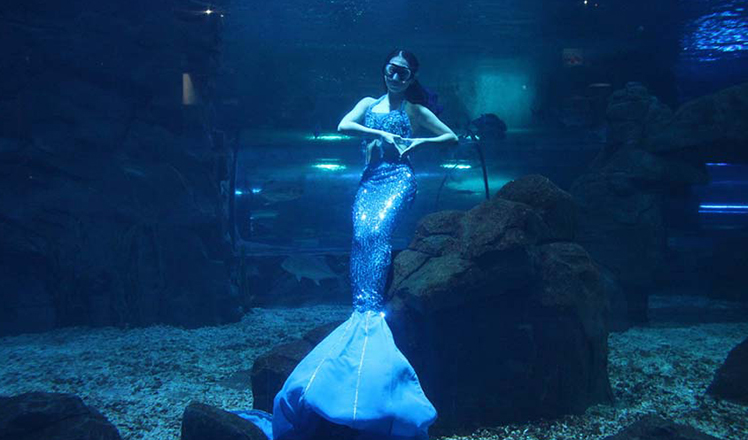
 This 'mermaid' left broadcasting for a watery world
This 'mermaid' left broadcasting for a watery world
Most Viewed
Editor's Picks

|

|

|

|

|

|
Today's Top News
What ends Jeb Bush's White House hopes
Investigation for Nicolas's campaign
Will US-ASEAN meeting be good for region?
Accentuate the positive in Sino-US relations
Dangerous games on peninsula will have no winner
National Art Museum showing 400 puppets in new exhibition
Finest Chinese porcelains expected to fetch over $28 million
Monkey portraits by Chinese ink painting masters
US Weekly

|

|
